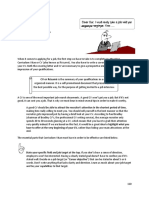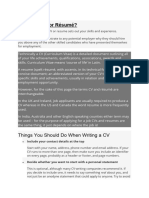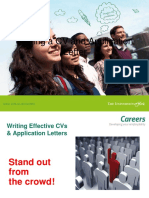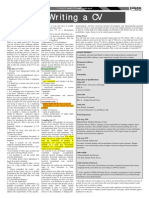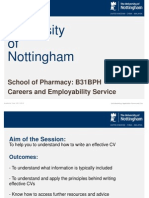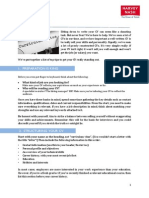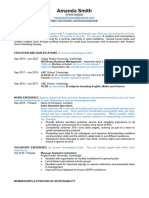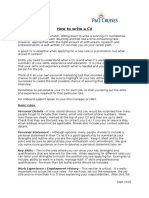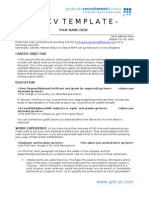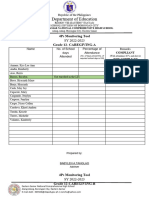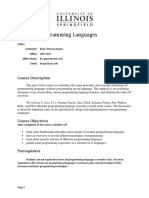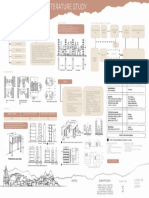0% found this document useful (0 votes)
51 views15 pagesLecture 3 How To Create Killer CV
This document provides guidance on creating an effective curriculum vitae or CV. It begins with a list of dos and don'ts for CV formatting and content. Key recommendations include tailoring each CV for the specific job, using bullet points and headings, and keeping the document to 2 pages or less. The document then reviews CV sections like personal information, education, work experience, and skills. It cautions against unnecessary information and advises focusing on skills relevant to the target job. Overall, the document teaches best practices for constructing a CV that highlights qualifications for a prospective employer.
Uploaded by
harutotsukassaCopyright
© © All Rights Reserved
We take content rights seriously. If you suspect this is your content, claim it here.
Available Formats
Download as PDF, TXT or read online on Scribd
0% found this document useful (0 votes)
51 views15 pagesLecture 3 How To Create Killer CV
This document provides guidance on creating an effective curriculum vitae or CV. It begins with a list of dos and don'ts for CV formatting and content. Key recommendations include tailoring each CV for the specific job, using bullet points and headings, and keeping the document to 2 pages or less. The document then reviews CV sections like personal information, education, work experience, and skills. It cautions against unnecessary information and advises focusing on skills relevant to the target job. Overall, the document teaches best practices for constructing a CV that highlights qualifications for a prospective employer.
Uploaded by
harutotsukassaCopyright
© © All Rights Reserved
We take content rights seriously. If you suspect this is your content, claim it here.
Available Formats
Download as PDF, TXT or read online on Scribd
/ 15



